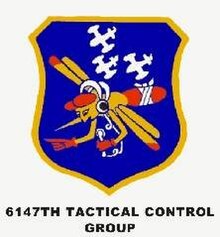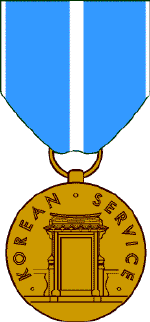
The Korean War was significant in the fact that it was the first war in which the newly independent United States Air Force was involved.
Daegu International Airport is the international airport serving the city of Daegu and the surrounding area in the southeast of South Korea. The airport is also a military base for the ROKAF's 11th Fighter Wing, whose three squadrons fly the F-15K.
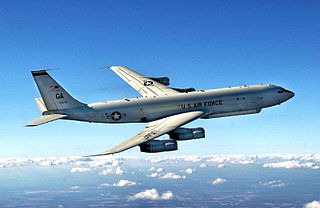
The 116th Air Control Wing is a Wing of the Georgia Air National Guard/United States Air Force, stationed at Robins Air Force Base, Georgia. If activated for federal service, the wing is gained by Air Combat Command.

Forward air control is the provision of guidance to close air support (CAS) aircraft intended to ensure that their attack hits the intended target and does not injure friendly troops. This task is carried out by a forward air controller (FAC).
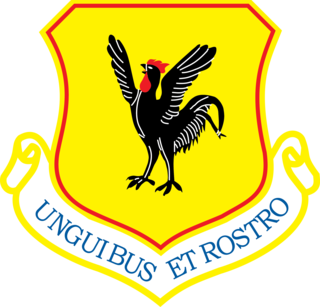
The United States Air Force's 18th Wing is the host wing for Kadena Air Base, Okinawa, Japan and is the Air Force's largest combat wing. It is the largest and principal organization in the Pacific Air Forces Fifth Air Force.

The 111th Attack Wing is a unit of the Pennsylvania Air National Guard, headquartered at Biddle Air National Guard Base in Horsham, Pennsylvania. If activated to federal service, the Wing is gained by the United States Air Force Air Combat Command. It provides protection of life, property, and the preservation of peace and order when tasked to do so by state or federal authorities. The Wing also provides operational and support units, as well as qualified personnel, to support wartime tasking and contingency commitments of any nature.
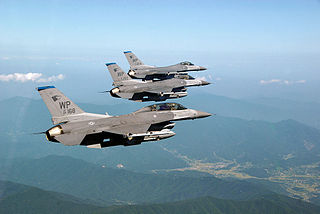
The United States Air Force 8th Fighter Wing is the host unit at Kunsan Air Base, Republic of Korea and is assigned to Seventh Air Force. Seventh Air Force falls under Pacific Air Forces (PACAF). The Wing's 8th Operations Group is the successor of the 8th Pursuit Group, one of the 15 original combat air groups formed by the Army before World War II.

The 136th Airlift Wing is a unit of the Texas Air National Guard, stationed at Naval Air Station Joint Reserve Base Fort Worth, Fort Worth, Texas. If activated to federal service, the wing is gained by the United States Air Force's Air Mobility Command (AMC).

The 502d Air Operations Group in an inactive United States Air Force unit. It was last active in October 2006 at Hickam Air Force Base, Hawaii, where it had served as the umbrella for intelligence and operational support units under Pacific Air Forces
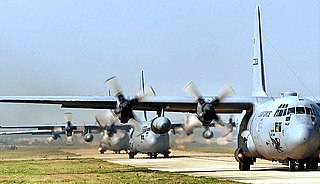
The 158th Airlift Squadron is a unit of the Georgia Air National Guard's 165th Airlift Wing located at Savannah Air National Guard Base, Georgia. The 158th is equipped with the C-130H Hercules and is operationally-gained by the Air Mobility Command (AMC).

The 138th Attack Squadron is a unit of the New York Air National Guard's 174th Attack Wing located at Hancock Field Air National Guard Base in Syracuse, New York. The 138th is equipped with the MQ-9 Reaper Remotely Piloted Aircraft (RPA).

The United States Air Force in South Korea is composed of units assigned to Pacific Air Forces Seventh Air Force. The mission of the personnel, equipment and aircraft is to deter, protect and defend the Republic of Korea from attack from the Democratic People's Republic of Korea (DPRK) or more commonly known as North Korea.

Forward air controllers (FACs) played a significant part in the Vietnam War from the very start. Largely relegated to airborne duty by the constraints of jungled terrain, FACs began operations as early as 1962. Using makeshift propeller-driven aircraft and inadequate radio nets, they became so essential to air operations that the overall need for FACs would not be completely satisfied until 1969. The FAC's expertise as an air strike controller also made him an intelligence source, munitions expert, communication specialist, and above all, the on-scene commander of the strike forces and the start of any subsequent combat search and rescue if necessary.

The 18th Operations Group is the operational flying component of the United States Air Force 18th Wing, stationed at Kadena Air Base, Okinawa, Japan.

The 19th Weapons Squadron is a United States Air Force unit assigned to the USAF Weapons School at Nellis AFB, Nevada.

The 504th Expeditionary Air Support Operations Group is an inactive United States Air Force unit. It was first activated as the 504th Tactical Air Support Group in 1966 for service during the Vietnam War, and was reactivated in 2009 for service in Afghanistan. It was inactivated on 12 May 2016.

The 62d Expeditionary Attack Squadron is a provisional United States Air Force unit. It is a provisional squadron of Air Combat Command, attached to the 432d Air Expeditionary Operations Group, stationed at Creech Air Force Base, Nevada. The primary mission of the 62d EATKS is to launch and recover all the Air Force Remotely Piloted Aircraft in Afghanistan.
Forward air control operations during World War II were begun as an ad hoc expedient to wartime conditions.
Forward air controllers in the Korean War were prominent throughout the conflict. United Nations forces depended upon improvised U.S. forward air control systems. The United States military held two competing doctrines for directing close air support (CAS). The U.S. Marine Corps' system depended on an organic supporting air wing delivering ordnance within 1,000 yards of front-line troops; this was to compensate for their weakness in artillery caused by being an amphibious force. On the other hand, the U.S. Army believed close air support should extend the range of its own organic artillery; it also wanted its own air corps. However, the U.S. Air Force was tasked with supplying trained fighter pilots as forward air controllers (FACs), with the Army supplying equipment and personnel. As events fell out, the 1st Marine Air Wing supplied the FACs and air strikes for X Corps during the war, while 5th Air Force supplied FACs and strike support to 8th Army. There were awkward attempts at coordination between the two, and with carrier-borne air power, though with limited success.

The 45th Reconnaissance Squadron is a United States Air Force unit. It is assigned to the 55th Operations Group and stationed at Offutt Air Force Base, Nebraska. It is one of the most decorated squadrons of the active duty United States Air Force with a combat record in three wars, and a peacetime record of vital contributions to worldwide reconnaissance, treaty monitoring, and pilot proficiency training.
